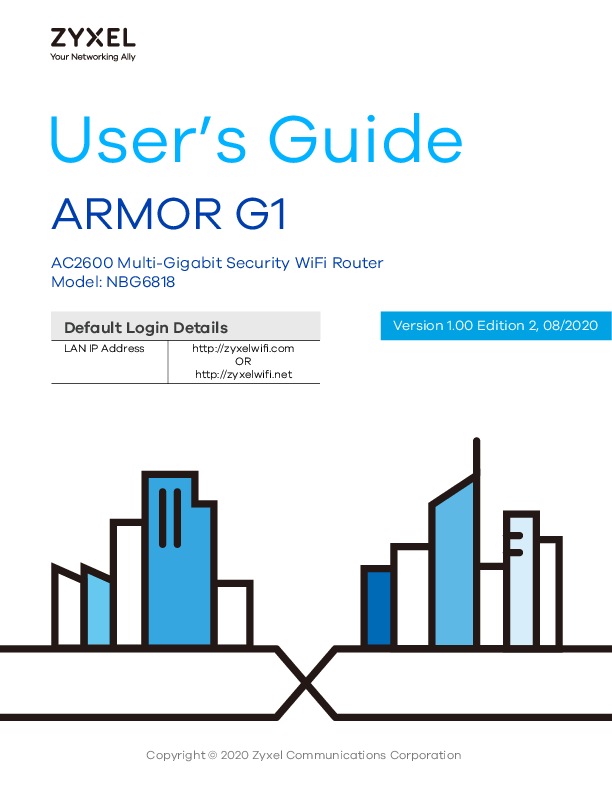Introduction to the ARMOR G1 WiFi Router
The Zyxel ARMOR G1, model NBG6818, is a high-performance AC2600 Multi-Gigabit Security WiFi Router designed to provide robust and secure wireless networking for homes and small offices. This user guide offers comprehensive instructions for setting up, configuring, and managing your ARMOR G1 device.
Key Features and Capabilities
The ARMOR G1 enhances your existing wired network by extending wireless coverage, offering seamless connectivity for mobile users. It supports dual-band WiFi (2.4GHz and 5GHz) simultaneously, ensuring optimal performance for various devices. Advanced features include a built-in firewall and content filtering for enhanced Internet security.
This guide covers essential setup procedures, including:
- Initial setup and wizard-driven configuration.
- Managing the router via the Web Configurator or the Zyxel ARMOR mobile app.
- Configuring WiFi networks, including Main and Guest WiFi.
- Utilizing USB applications for file sharing and media streaming.
- Securing your network with firewall rules and MAC filtering.
- Troubleshooting common issues.
For further assistance and additional resources, please visit the Zyxel support website. Zyxel Support
